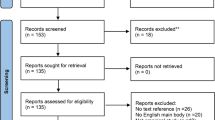Abstract
Soon after the emergence of the open courseware movement, in 2002 UNESCO coined the term Open Educational Resources (OERs) in a forum on the impact of open courseware on higher education in developing countries. Since then, the OER movement has gained much momentum and a global movement towards collaboration in the development and sharing of content has developed worldwide. Uttarakhand Open University (UOU) has embraced the OER approach and started following Open Educational Practices (OEP) after adoption of OER policy by it. Using OERs, the University has developed 45 courses and released them under the Creative Commons license. In addition, the University has conducted many OER sensitization workshops, both for policymakers and stakeholders, in the last few years. This paper presents UOU’s journey of adopting Open Educational Practices, from policy formulation to implementation. This paper also discusses the outcome of a survey conducted by UOU for ascertaining its teachers’ attitude towards OERs.



Similar content being viewed by others
References
COL (2017) Open educational resources: from commitment to action. Commonwealth of Learning, Burnaby
Dutta I (2016) Open educational resources(OER): oppourtinities and challanges for Indian higher education. Turk Online J Distance Educ 17:110–121. https://doi.org/10.17718/tojde.34669
Kanwar A (2015). Open Education Resources (OER): What, Why, How? Retrieved Jan. 25, 2017, from https://www.col.org/news/speeches-presentations/open-education-resources-oer-what-why-how
Lu ZX, Zhang YC (2011) iTunes U and the construction of open educational resources. Advanced materials research. Trans Tech Publications, Zürich, pp 197–200
MacCann A (1996) Designing accessible learning materials for learners with disabilities and learning difficulties. Aust J Educ Technol 12(2):109–120
Murphy A (2013) Open educational practices in higher education: institutional adoption and challenges. Distance Educ 34(2):201–217
Pena HR (2009) Higher education: the success and challenges in open education resources (OER). Research in Computing Library and Information Science(RCLIS)
Perryman L-A (2013) Seventh Pan-Commonwealth Forum on Open Learning (PCF7). Abuja, Nigeria
Perryman L-A, Seal T (2016) Open Educational Practices and Attitudes to Openness across India: Reporting the Findings of the Open Education Research Hub Pan-India Survey. J Interact Media Educ. https://doi.org/10.5334/jime.416
UNESCO (2002). Communication and Information. Retrieved April 04, 2017, from http://www.unesco.org/new/en/communication-and-information/access-to-knowledge/open-educational-resources/what-are-open-educational-resources-oers/
Funding
This publication is a part of a joint Project “Integrated Open and Distance Learning through ICT at Uttarakhand Open University for Sustainable Development” of Uttarakhand Open University, Haldwani and Commonwealth Educational Media Centre for Asia, New Delhi.
Author information
Authors and Affiliations
Corresponding author
Rights and permissions
About this article
Cite this article
Pande, J. Open educational practices at Uttarakhand Open University: from policies to implementation. Int. j. inf. tecnol. 11, 445–452 (2019). https://doi.org/10.1007/s41870-018-0208-y
Received:
Accepted:
Published:
Issue Date:
DOI: https://doi.org/10.1007/s41870-018-0208-y




